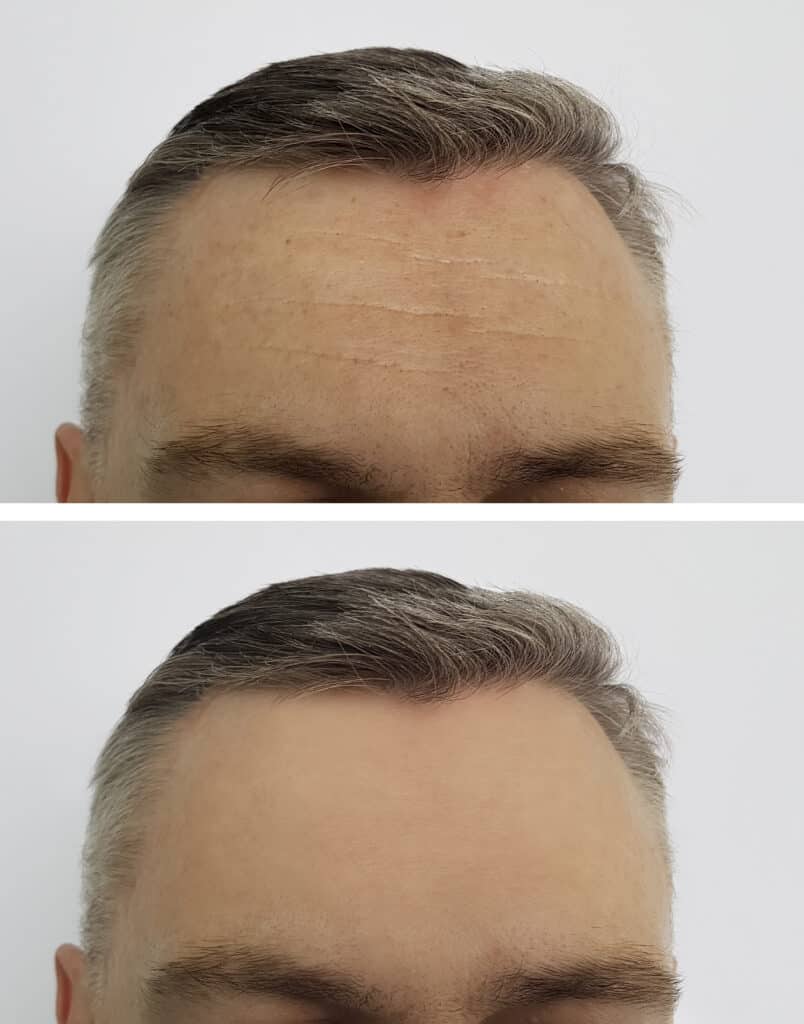Getting botox is a popular cosmetic treatment, and for good reason! Botox injections are a muscle relaxer that can temporarily smooth out wrinkles and lines on your skin and help with muscle spasms. It’s an incredibly effective way to achieve a more youthful appearance without surgery.
If you’re thinking about getting Botox for the first time, read on to know what to expect!

To Botox Or Not to Botox?
The eternal question. As with any other cosmetic procedure, botox may not be for everyone.
For example, botox is an effective treatment for dynamic lines and wrinkles, formed by facial expressions made up of muscle contraction, such as smiling, laughing, or squinting.
But if you’re more concerned by static lines and wrinkles, which are simply the result of a loss of elasticity and collagen in the skin, you may prefer either fillers or a combination of fillers and botox.
Always start with a Consultation
Whether it’s your first treatment or nor, there are a variety of things that you should discuss with a licensed professional in an initial appointment before your botox injections are administered, including:
Your medical history. Your practitioner needs to know if there is anything to worry about, for example, a neurological disease, pregnancy or even breastfeeding. This would be the perfect time to ask about any specific concerns you may have.
Your goals and expectations. It’s important that your practitioner understands your goals and that you go into it knowing more or less what the botox results will look like.

Your facial muscle movement. You will likely be asked to smile, frown, and raise your eyebrows, so that we can see how your face naturally moves and decide where the botox injections should be placed.
Possible side effects. They’re very rare, but you should still be aware of any side effects botox can cause.
Aftercare recommendations. Botox is a minimally invasive medical procedure and doesn’t involve any downtime, but there are some precautions patients need to take.
For example, you should avoid rubbing the treated muscle, as it can cause the botox to spread to unwanted areas.
Your First Appointment may be longer
Your first appointment works like a consultation review. We want to make sure that you understand all of the information discussed during the consultation, and we know that you may have some more questions after thinking it through for a few days and maybe even doing some more research. We also reconfirm your medical history and the identified target areas.
Since botox needles are tiny, the actual injecting botox part should be fairly quick and painless. An ice pack will be applied afterward to discourage swelling.

You may get redness, bruising or swelling, or even a headache.
Possible side effects will be discussed during your consultation, but maybe you’d like to know a little more about it beforehand.
You may experience redness, bruising, or swelling around the injection site.
You may have a headache, neck pain, or muscle weakness
And you may also suffer from nausea and excessive sweating.
These are all considered mild side effects and should be temporary. If they bother you, last longer than expected, or become severe, make sure you talk to your doctor.
Don’t engage in strenuous exercise for 24 hours
You’ve likely noticed that your face is red and flushed after jumping off the treadmill. This is because exercise increases blood flow.
Usually, that’s a good thing, but you may want to avoid it directly after a botox treatment.
It could cause the botox to move to the surrounding area, which means, you’ll see unwanted effects. Waiting 24 hours ensures that the botox has had time to settle into place. After that, feel free to jump back on that treadmill.
Don’t lay down for a few hours
This is for the same reason you shouldn’t rub your face. You don’t want the botox to move to other areas, plus it can encourage bruising in the injection site. Give it about 4 hours before you take that long-awaited nap.
You also shouldn’t bend down, since that can also increase blood flow to your face. Just stay upright for a few hours
And You Shouldn’t Take Aspirin
Aspirin is a blood thinner and increases the risk of bruising or bleeding after your botox injection. While it may be tempting if you have a headache, you should avoid it for 24 hours both before and after your botox treatment.
If you need some pain management medication, try Tylenol instead.
Results will improve over time
Botox is temporary, however, with continued use, the results improve. Since botox freezes the facial muscles, it prevents facial creasing, so the skin has time to repair itself.
Basically, with each botox treatment, you’re not starting from scratch. With long-term use, you may even need less botox over time to achieve the same results.

You’ll see results for three to four months
Sadly, just like many other cosmetic procedures, botox doesn’t last forever. It will take your body between three and four months to metabolize the botox toxin. Depending on each person. Most patients find that the first treatment lasts less than subsequent treatments and regular botox injections could also help the effects last longer.
Your skin might look the same (at first)
For Botox to work, it must pass the cellular level of the muscle and inhibit the neurotransmitters in the nerve, this takes some time. In general, you may see the impact of Botox only 3 to 4 after the treatment. But it may take up to two weeks to see results, just in time for a follow up appointment.
You’ll get 5-7 years off your face!
Botox is a wonderful anti-aging product, and millions of people have used it. Your skin will appear smoother, but you’ll still look like yourself; just more refreshed. The effects of Botox seem almost miraculous, and will take years off your face.

